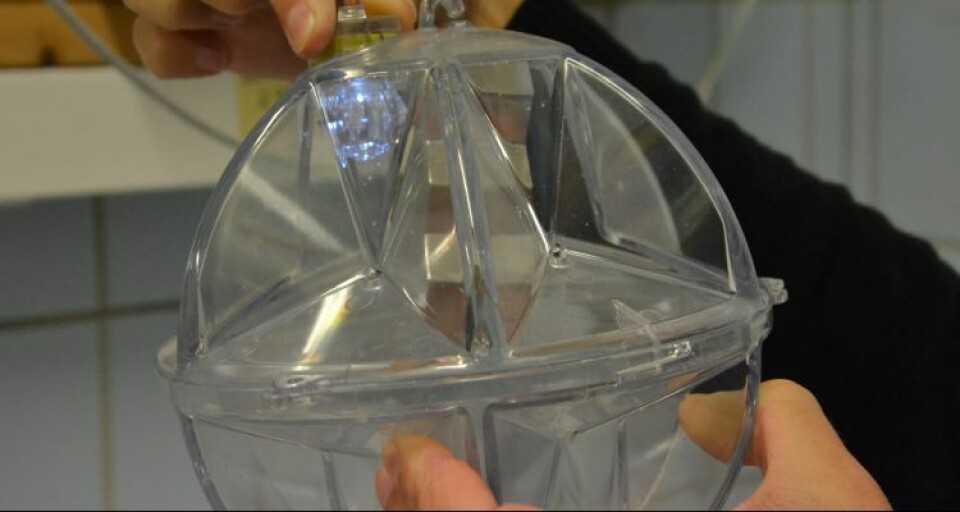
Plans to update louse trap
Following promising preliminary results, funding to further develop a novel trap that catches sea lice around salmon pens is currently being sought by researchers at the Institute of Marine Research (IMR) in Austevoll.

It was Howard Browman and Anne Berit Skiftesvik, both researchers at IMR, who led the project that culminated in the sea lice trap.
Having researched the stimuli which cause sea lice to locate a host, it became clear that this could be manipulated to reduce louse infestations. The idea of the trap was inspired by similar insect traps, which are widely used in terrestrial biological research.
“We saw that lice react to fish mucous through surveys of nerve impulses in the laboratory. Then we discovered that the behaviour was also stimulated by a change in light, such as when a fish swims above the lice,” Durif told kyst.no during a visit to Austevoll.
“The traps were set up around the site at different depths, and attract lice with a flashing light then catch them,” explains Skiftesvik, who led the project.
However, although early studies gave promising results, a number of problems arose.
“The trap should be set up around the plant. In retrospect, we see that the traps should be set up at a distance from the farm. The cages that had traps around them had significantly more lice, because the lice were attracted to them. We now know that trap should be used to catch lice before they reach the site,” explains Skiftesvik.

When the trap was later tested in laboratory tanks, lice butted against the sides of the trap but struggled to get in.
“The laboratory tests showed that we need to make the entrance to the trap easier to find for lice. We saw that our earlier prototypes with colours seemed better at retaining the lice, while the last trap was transparent,” she reflects.
Now she wants new funds to further research the trap, as it proved effective at attracting lice, but poorly designed for containing them.
“We only undertook one large-scale trial, but were not permitted to test the design in the lab. Now we want funding to test out different designs in the lab and small-scale field trials before testing on a larger scale, placing the traps further form the sea cages,” the researcher concludes.
Research, through the FORNY2020 programme, allocated 250,000 NOK to Norwegian Design and Bergen technology transfer to create a prototype and to commercialize the sealice trap. The design was developed by Eker design.






















































